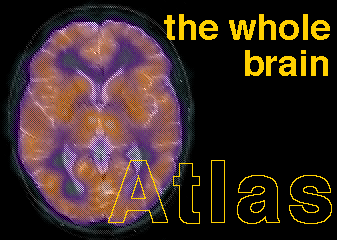200 results.
Restoring Active Memory (RAM)
Visit Website
"The Restoring Active Memory (RAM) program aims to mitigate the effects of traumatic brain injury (TBI) in military Service members by developing neurotechnologies to facilitate memory formation and recall in the injured brain. More than 270,000 Service members have been diagnosed with TBI since 20001. The condition frequently results in an impaired ability to retrieve memories formed prior to injury and a reduced capacity to form or retain new memories following injury. Despite the scale of the problem, few effective therapies currently exist to mitigate the long-term consequences of TBI on memory. Enabling restoration of memory function would support military readiness by providing injured personnel the option of returning to duty, and would improve quality of life for wounded veterans.
DARPA’s end goal for the RAM program is to develop and test a wireless, fully implantable neural interface for human clinical use. To achieve that goal, the program blends fundamental research and technology development. Performer teams are building multi-scale computational models with high spatial and temporal resolution that describe how neurons code declarative memories—the well-defined parcels of knowledge that can be consciously recalled and described in words, such as events, times, and places. Teams are also exploring new methods for analyzing and decoding neural signals to understand how targeted stimulation might be applied to help restore function to the injured brain."
Neuro Function, Activity, Structure, and Technology (Neuro-FAST)
Visit Website
"Military personnel control sophisticated systems, experience extraordinary stress, and are subject to injury of the brain. DARPA created the Neuro Function, Activity, Structure, and Technology (Neuro-FAST) program to begin to address these challenges by combining innovative neurotechnology with an advanced understanding of the brain. Using a multidisciplinary approach that combines data processing, mathematical modeling, and novel optical interfaces, the program seeks to open new pathways for understanding and treating brain injury, enable unprecedented visualization and decoding of brain activity, and build sophisticated tools for communicating with the brain."
Systems-Based Neurotechnology for Emerging Therapies (SUBNETS)
Visit Website
"The Systems-Based Neurotechnology for Emerging Therapies (SUBNETS) program aims to improve force health by using neurotechnology as the basis for effective, informed, and precise treatments for neuropsychiatric illnesses in military Service members. The effects of such illnesses, brought on by war, traumatic injuries, and other experiences, remain challenging to treat. Current treatment approaches—surgery, medications, and psychotherapy—can often help to alleviate the worst effects of illnesses such as major depression and post-traumatic stress, but they are imprecise and not universally effective. Through SUBNETS, DARPA seeks to generate the knowledge and technology required to deliver relief to patients with otherwise intractable neuropsychiatric illness.
The SUBNETS vision is distinct from current therapeutic approaches in that it seeks to create an implanted, closed-loop diagnostic and therapeutic system for treating, and possibly even curing, neuropsychiatric illness. That vision is premised on the understanding that brain function—and dysfunction, in the case of neuropsychiatric illness—plays out across distributed neural systems, as opposed to being strictly relegated to distinct anatomical regions of the brain. The program also aims to take advantage of neural plasticity, a feature of the brain by which the organ’s anatomy and physiology alter over time to support normal brain function. Because of plasticity, researchers are optimistic that by using SUBNETS-developed technology the brain can be trained or treated to restore normal functionality following injury or the onset of neuropsychiatric illness."
Neuronetics
Visit Website
Neuronetics is a Malvern, PA based, publicly traded company incorporated in Delaware in April 2003, that develops non-invasive treatments for depression and other chronic psychiatric and neurological disorders based upon neuromodulation technology.
Neuronetics became "the first company to get FDA authorization for a transcranial magnetic stimulation (TMS) device to treat major depressive disorder in 2008."
They manufacture a transcranial magnetic stimulation device.
The Whole Brain Atlas
Visit Website
"The Whole Brain Atlas is an online resource for central nervous system imaging developed by Keith Johnson, MD, and Alex Becker, PhD. It is jointly supported by the Brigham and Women's Hospital Departments of Radiology and Neurology, Harvard Medical School, the Countway Library of Medicine, and the American Academy of Neurology. The site has six main sections: (1) a neuroimaging primer for those with limited knowledge of the imaging vocabulary; (2) a normal anatomy atlas; (3) cerebrovascular disease; (4) neoplastic disease; (5) degenerative disease; and (6) inflammatory disease."


